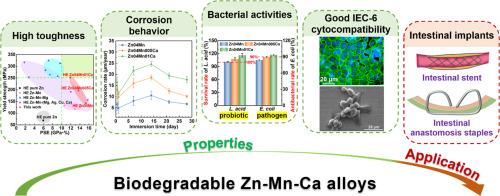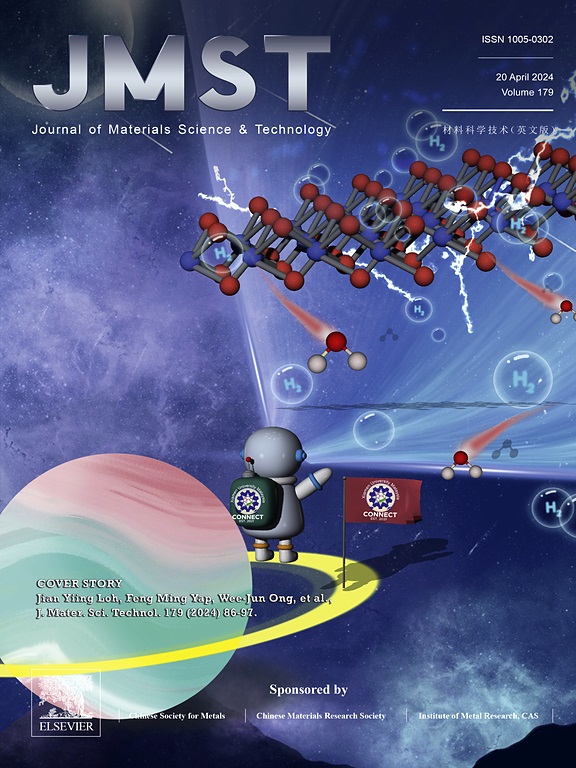High−toughness Zn-Mn-Ca alloys as potential materials for intestinal implants
IF 11.2
1区 材料科学
Q1 MATERIALS SCIENCE, MULTIDISCIPLINARY
引用次数: 0
Abstract
There have been many studies on the perspective Zn alloys for bone implants, but few for intestinal applications. Zn-0.4Mn-xCa (x = 0, 0.05 and 0.1 wt.%) alloys are developed in this work for intestinal applications, in order to make use of proliferation effects of Mn and Ca elements on intestinal probiotics and epithelial cells. Rat small intestinal crypt epithelial (IEC-6) cells can grow healthily on surfaces of all the alloys. Among them, the number of healthy cells on Zn-0.4Mn-0.1Ca is the largest. IEC-6 cell viability is over 160% (much higher than the benchmark of 75%) in 20%–100% extracts of Zn-0.4Mn-0.1Ca for 5 d. All the alloys can promote proliferation of Lactobacillus acidophilus (intestinal probiotic) and inhibit growth of Escherichia coli (intestinal pathogen). Among them, Zn-0.4Mn-0.1Ca alloy possesses the greatest effect. With the increase of Ca content, the strength of the alloy increases. Zn-0.4Mn-0.1Ca alloy has the highest strength and good plasticity among the three alloys. It exhibits a yield strength of 252 MPa, an ultimate tensile strength of 288 MPa, and a elongation to failure of 41%. Since CaZn13-MnZn13-Zn micro-cell controls corrosion rate, Zn-0.4Mn-0.1Ca with the highest volume fractions of MnZn13 and CaZn13 has the highest corrosion rate of 17.64 μm/year when immersed in simulated intestinal fluid for 28 d. Overall, the Zn-Mn-Ca alloys are promising candidates for intestinal implants.

求助全文
约1分钟内获得全文
求助全文
来源期刊

Journal of Materials Science & Technology
工程技术-材料科学:综合
CiteScore
20.00
自引率
11.00%
发文量
995
审稿时长
13 days
期刊介绍:
Journal of Materials Science & Technology strives to promote global collaboration in the field of materials science and technology. It primarily publishes original research papers, invited review articles, letters, research notes, and summaries of scientific achievements. The journal covers a wide range of materials science and technology topics, including metallic materials, inorganic nonmetallic materials, and composite materials.
 求助内容:
求助内容: 应助结果提醒方式:
应助结果提醒方式:


